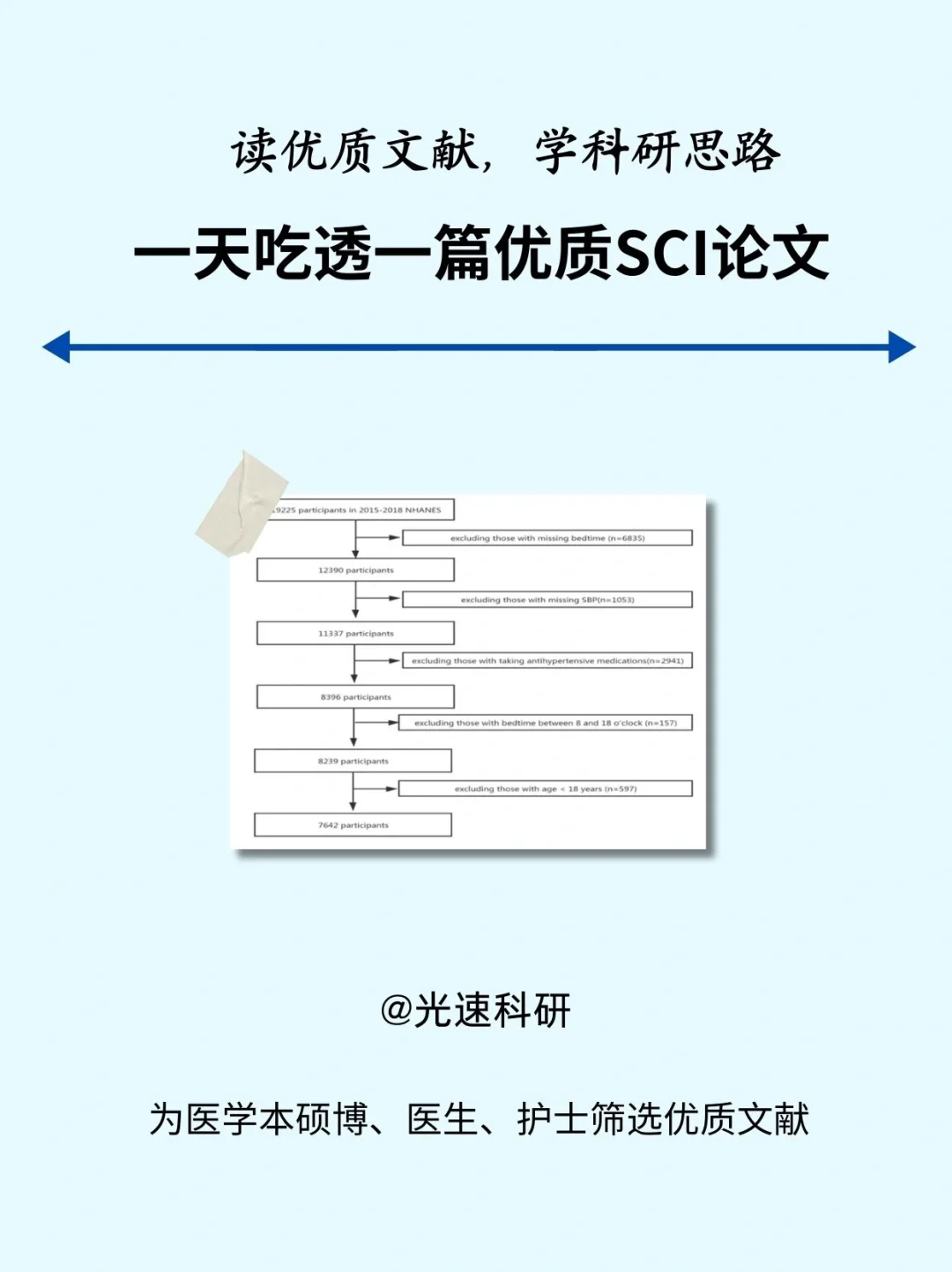
NHANES指标:bedtime at night!











今天给大家分享一篇在 2021年12月发表在《Front Med》(1区,IF=3.1)的文章。本文这项研究利用了美国国家健康和营养调查(NHANES)2015–2018年的数据,探讨夜间就寝时间与成年人高血压患病率之间的关系。
暴露:本研究的暴露变量是成年人的就寝时间,具体是通过调查问卷收集的“您通常在工作日或平日几点入睡?”的回答来定义的。文章中进一步将就寝时间处理成连续变量进行数据分析。
结局:研究的主要结局是成年人的收缩压(SBP),收缩压是衡量心血管健康的关键指标,与高血压病、心血管疾病等多种健康问题密切相关。